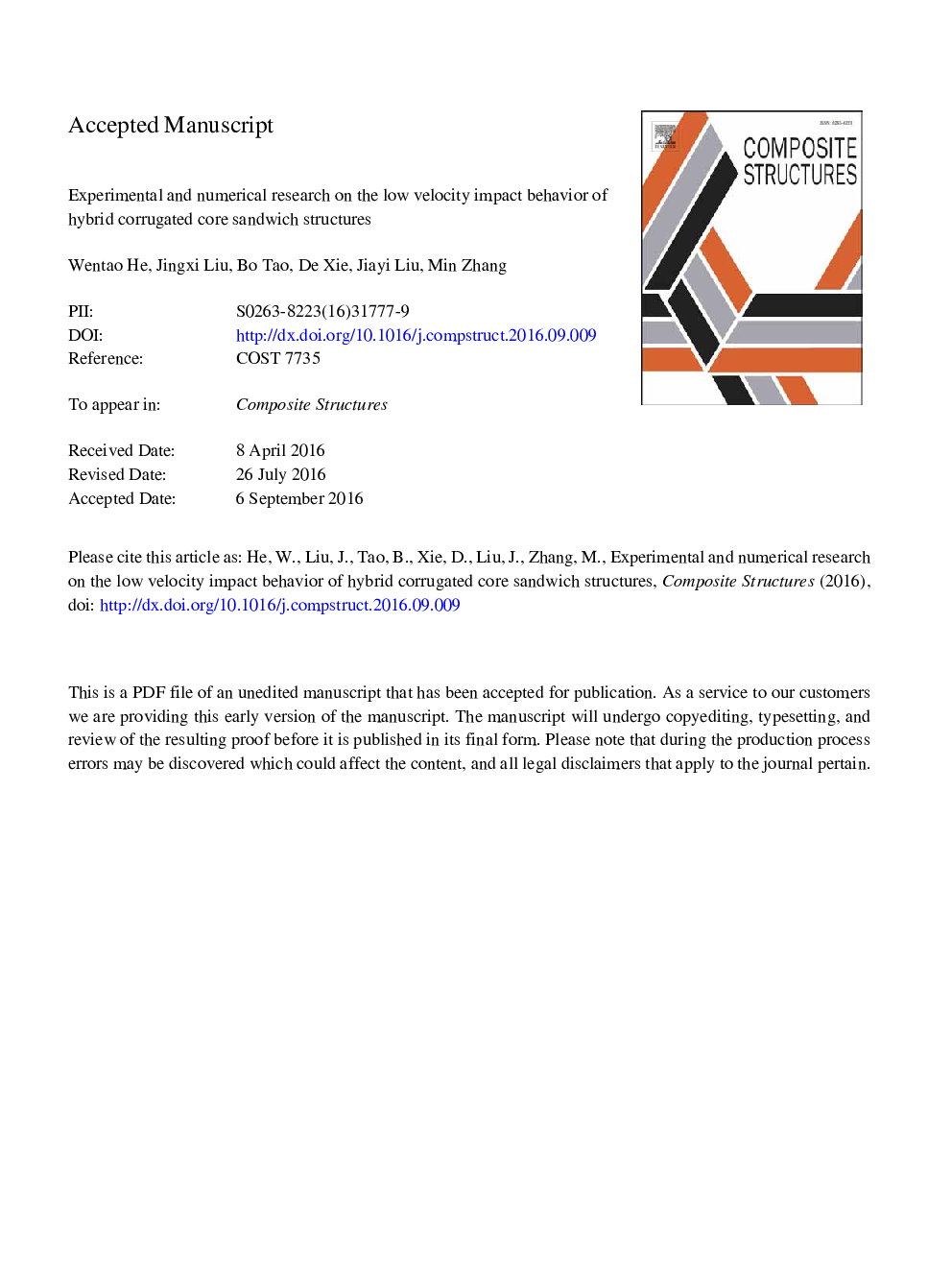| Article ID | Journal | Published Year | Pages | File Type |
|---|---|---|---|---|
| 4912326 | Composite Structures | 2016 | 49 Pages |
Abstract
Corrugated core sandwich structures are fabricated with carbon fiber reinforced polymer (CFRP) face sheets and aluminum alloy cores. This lightweight design concept enables sandwich structures to maximize the specific bending stiffness/strength and improve the energy absorption capability. The low velocity impact behavior of such structures is investigated by experimentally and numerically. A range of low velocity impact tests are conducted to study the impact resistance, considering the effects of impact energy, core thickness and impact site on the impact load, absorbed energy and failure modes. A user subroutine VUMAT is developed to model the composite face sheet behavior, in which a progressive damage model based on the Hashin failure criteria and Yeh delamination failure criteria is implemented in ABAQUS/Explicit. There is a generally good agreement between the experimental and predicted results in terms of impact force, absorbed energy, and failure modes of sandwich structures. These studies reveal that fiber damage, matrix damage and delamination of face sheets as well as buckling of core members occur under varied impact energies. The results provide insight into the low velocity impact behavior of such structures, and the knowledge of failure mechanisms could be useful for the development of novel lightweight multifunctional structures.
Related Topics
Physical Sciences and Engineering
Engineering
Civil and Structural Engineering
Authors
Wentao He, Jingxi Liu, Bo Tao, De Xie, Jiayi Liu, Min Zhang,
